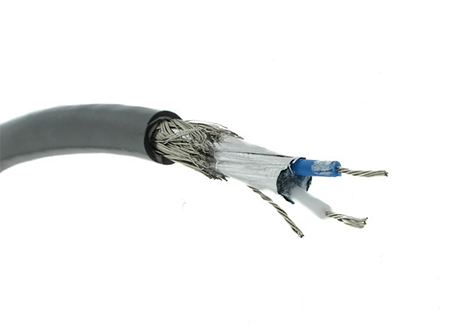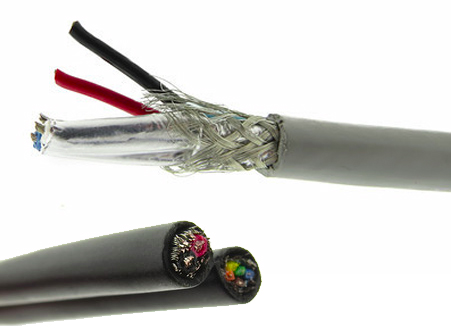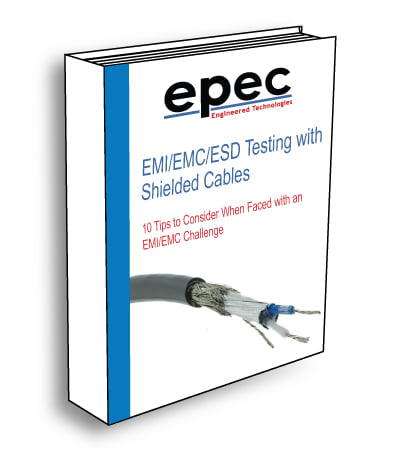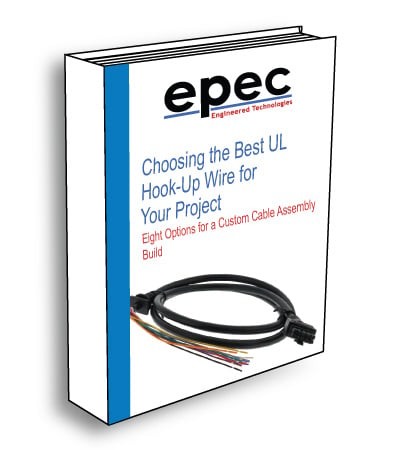Shielded Cable Assemblies
Why Is Shielding Needed?
Cable assemblies used for the transmission of data need to be protected from electromagnetic interference (EMI). EMI is a disturbance, sometimes called noise, which affects an assembly or electrical circuit due to either electromagnetic induction or electromagnetic radiation emitted from an external source. The disturbance may interrupt, obstruct, or otherwise degrade or limit the effective performance of the circuit and can range from a simple degradation of data to a total loss of data. The source of the disturbance may be any object, artificial or natural, that carries rapidly changing electrical currents, such as nearby electrical circuits and machinery.
Installations such as the factory floor, data centers, and offices are typically electrically noisy environments. Electrical noise either radiated or conducted as electromagnetic interference (EMI), can seriously disrupt the proper operation of neighboring equipment. An assembly's insulation and jacket material protect a cable mechanically from scrapes and abrasion and environmentally from moisture and spills, but these components are transparent to electromagnetic energy and offer no protection.
See our blog post on why shielded cables are used in assemblies for more information.
Combating EMI
The primary way to combat EMI in assemblies is through the use of shielding. The shield surrounds the inner signal or power carrying conductors. The shield can act on EMI in two ways; first it can reflect the energy and secondly it can pick up the noise and conduct it to ground. Cables are offered with various degrees of shielding and offer varying degrees of shielding effectiveness. The amount of shielding required depends on several factors, including the electrical environment in which the cable is used, the cost of the cable, and issues such as cable diameter, weight, and flexibility. In some applications, an unshielded assembly may be used and installed in a controlled environment. This controlled environment, such as inside a metal cabinet or run through a metal conduit, protects the cable from ambient EMI. The metal of the enclosure shields the electronics, circuits, and assemblies inside.
Types of Shielding
There are two types of shielding typically used for cables: foil and braid. Foil shielding uses a thin layer of copper or aluminum, typically bonded to a carrier such as polyester to add strength and ruggedness. Tape shields provide 100% coverage of the conductors they surround, providing complete isolation from the external environment. Tape shields are thin which makes them difficult to work with, especially when applying a connector. Typically, rather than attempting to ground the entire shield, a drain wire is used to terminate and ground the shield.
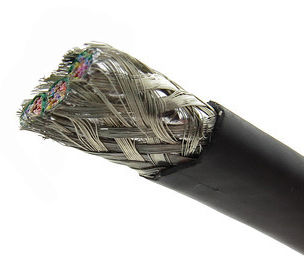
The second method of shielding used for cables is braiding, which is a woven mesh of bare or tinned copper wires. The braid provides a low-resistance path to ground and is much easier to terminate by crimping or soldering when attaching a connector. Braided shields, however, do not provide 100% coverage. Depending on the tightness of the weave, braids typically provide between 70% and 95% coverage. Because copper has higher conductivity than aluminum and a braid has more bulk for conducting noise, a braid shield is more effective than tape shields. However, braid shields add size and cost to the cable.
When assemblies are used in very noisy environments, multiple shielding layers are often employed. The most common of these would be the use of both a foil and a braid. In composite cables, individual pairs or other components are sometimes shielded with a foil shield to provide crosstalk protection between those components and the other components of the cable. An overall foil, braid, or both would be still used on the cable.
Conclusion
To reduce or eliminate EMI a cable with sufficient shielding for the application's needs should be used. Some environments may dictate the use of only a foil shield while other environments may dictate the use of a braid or foil/braid combination. Make sure to use a cable suited to the application. Repeatedly flexed cables usually require the use of a spirally wrapped shield as opposed to a braid shield. In a flex application foil shields have the potential to tear and should be avoided. The equipment that the cable is connected to needs to be properly grounded. The use of an earth ground is needed wherever possible. Most connector designs allow for a full 360° termination of the shield. Connectors used in a shielded cable assembly should offer shielding effectiveness equal to that of the cable. The connectors used in a shielded cable assembly should be manufactured with metal-coated plastic, cast zinc, or aluminum backshells. The components of a shielded assembly must match – a high quality cable won't improve the effectiveness of an assembly if a poor connector is used, and a well shielded connector won't improve the performance of a poorly constructed cable.
Having EMI Challenges?
Guard your data integrity with Epec's custom shielded cable assemblies. navigate EMI challenges effectively. Consult our experts for your tailored solution now!
Request a Quote Request Design Support Request More Information

